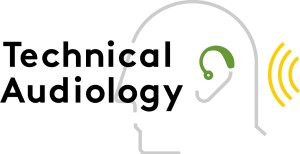Hearing-aid processing & fitting
Large differences in aided outcome among hearing-impaired listeners are very common. One of our aims is to understand this variability better, so that we can develop more individualised hearing-aid solutions. To achieve this, we investigate how audiological and non-audiological factors influence aided outcome in different groups of listeners.
Furthermore, we develop new fitting strategies that are meant to compensate for the deficits we observe. This includes work on processing schemes that can help in complex acoustic environments, for example those characterized by the presence of reverberation. In addition, we explore benefits from new hearing-aid technology, for example low-delay processing.
 Picture: Lars Skaaning
Picture: Lars Skaaning
EEG-based measures of speech perception
Electrophysiological measurements can provide objective assessments of auditory function. In our lab, we work on electroencephalography (EEG)-based measures that tap into different aspects of speech perception. More specifically, we develop cortical measures of speech processing in normal-hearing and hearing-impaired listeners and apply them to the study of aided outcome. Our goal is to use these measures for the fitting of hearing devices and for evaluating the benefit they provide.
 Picture: Lars Skaaning
Picture: Lars Skaaning
Speech-in-noise deficits in children
Problems with understanding speech in noisy situations in children are relatively common. To allow them to be detected, sensitive diagnostic tests are needed. Current work in our lab is concerned with the development of new speech test materials that are suited for children aged 6 years and above. Using these new materials together with other audiological tests, we study the hearing abilities of children with a history of recurrent otitis media. In this way, we can characterise their hearing deficits, which provides a basis for developing new types of treatment.
 Picture: Lars Skaaning
Picture: Lars Skaaning
Real-world listening outcome
The rapid development of mobile platforms and devices has made it possible to move much research out of the lab. In the field of audiology, this has opened possibilities for investigating hearing-aid outcome ‘on the spot’. In our lab, we exploit wearable technology for studying the hearing-health behaviour of children and adults, and for evaluating aided outcome in the daily environments of these participants. The data collected in this manner provide insights into specific patterns of benefit, with the potential to guide hearing-aid treatment.
 Picture: Frida Neher
Picture: Frida Neher
